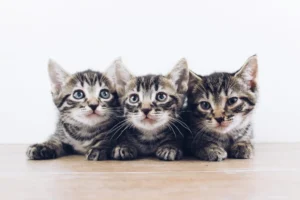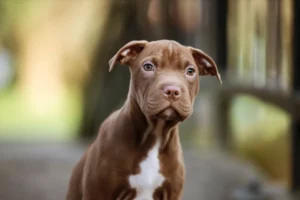Cats and dogs are two of the most popular pets in the world, both beloved for their unique personalities. While dogs are often known for their unwavering loyalty and affection, cats tend to be more independent and less overtly affectionate. But why is this the case?
Cats have a different way of showing affection compared to dogs, and there are several reasons why they may appear to be less affectionate. Let’s delve into the reasons behind why cats are less affectionate than dogs.
Personality Differences
Cats and dogs have distinct personalities that play a significant role in their levels of affection towards their owners. While dogs are known for their loyal and affectionate nature, cats are often perceived as more independent and aloof. This stems from their evolutionary history, as cats were originally solitary hunters, whereas dogs are pack animals that rely on social bonds for survival.
Unique Insight: Cats may show affection differently than dogs, such as through grooming behaviors or quiet companionship. Understanding these subtle cues can help cat owners appreciate the depth of their bond with their feline friends.
In terms of personality, dogs are often referred to as social butterflies, craving attention and interaction with their human companions. On the other hand, cats are more selective in their affections, choosing when and how they want to engage with their owners. This independence can sometimes be misinterpreted as aloofness, but it’s simply a reflection of their unique personality traits.
Ultimately, the key to fostering a strong bond with your cat lies in respecting their boundaries and allowing them to initiate affection on their terms. By understanding and accepting their independent nature, cat owners can build a deep and rewarding relationship with their feline companions based on mutual respect and trust.
Evolutionary Background
The evolutionary history of cats and dogs sheds light on why they display varying levels of affection towards humans. Cats were domesticated from wild ancestors who lived and hunted alone, which explains their more solitary and self-sufficient demeanor. In contrast, dogs evolved from social predators, such as wolves, that relied on cooperation and teamwork within a pack.
This divergence in evolutionary background has shaped the behavior of cats and dogs towards humans. Dogs have a strong drive to form close bonds with their human family members, mirroring the pack dynamics of their ancestors. This innate need for social connection and companionship makes dogs more openly affectionate and eager to please their owners.
On the other hand, cats retain some of their wild instincts for independence and self-reliance, leading them to be more selective in their displays of affection. While they can form deep attachments to their owners, cats value their autonomy and may not seek constant attention and validation like dogs do.
Understanding the evolutionary origins of cats and dogs can help pet owners appreciate the unique qualities of each species and tailor their interactions to suit their individual preferences. By recognizing and respecting these differences, cat and dog owners can nurture strong and fulfilling relationships with their beloved furry companions.
Socialization Factors
When it comes to why cats are less affectionate than dogs, early socialization plays a significant role. Cats that were not properly socialized as kittens may be more skittish or independent, making it challenging for them to display affection towards humans. Dogs, on the other hand, are often socialized from a young age to interact with people, leading to their more overt displays of affection. So, if you have a cat that seems aloof, it could be a result of their early socialization experiences.
Communication Styles
Cats and dogs have distinctive communication styles that influence how they show affection. While dogs are known for their wagging tails, licks, and excitement, cats have more subtle ways of showing they care. For cats, slow blinks, head-butting, and purring are common displays of affection. Understanding these differences in communication styles can help owners better recognize and appreciate the affection their cats are showing. So, don’t be discouraged if your cat doesn’t greet you at the door like a dog – they may just be communicating their love in a different way.
Additional Insight:
- Cats may show affection by grooming their owners. If your feline friend is licking you, they are displaying trust and affection. Embrace this grooming behavior as a sign of their love for you.
Independent Nature of Cats
Cats are famously known for their independent nature, which can sometimes be mistaken for aloofness. Unlike dogs, who are pack animals bred for companionship, cats are solitary hunters by nature. This means that they are less reliant on human interaction for their emotional well-being. While dogs have been selectively bred over thousands of years to focus on forming bonds with humans, cats have retained their independent streak. However, this doesn’t mean that cats don’t love their owners – they just show it in more subtle ways, such as grooming you or following you around the house. Understanding and respecting their need for space can lead to a more harmonious relationship.
Environmental Influences
The environment in which a cat or dog is raised plays a significant role in how affectionate they are towards humans. Cats that have had positive interactions with humans from a young age are more likely to display affectionate behavior. On the other hand, a lack of socialization or negative experiences can cause a cat to be more wary and less affectionate. Additionally, the presence of other pets in the household can impact a cat’s behavior – they may feel threatened or intimidated, leading to a decrease in affectionate gestures. Providing a safe and nurturing environment, along with positive reinforcement, can help foster a strong bond between you and your feline friend.
Factors that can influence a cat’s affection towards humans: 1. Early socialization experiences 2. Positive reinforcement and rewards for affectionate behavior 3. Presence of other pets in the household 4. Environment enrichment with toys, climbing structures, and hiding spots
By understanding these factors and making adjustments based on your cat’s needs, you can help create a loving and affectionate relationship with your feline companion.
Misconceptions About Cats
Contrary to popular belief, cats are not inherently less affectionate than dogs. The misconception stems from the fact that cats show affection in different ways than dogs do. While dogs may be more overt in their displays of love, cats have their unique subtle ways of showing affection. Understanding feline behavior is key to realizing that cats do care deeply for their humans; they just have a different approach to expressing it.
Here’s the truth: cats are independent creatures by nature, which is often mistaken for aloofness. However, cats form strong bonds with their owners and can be just as loving and loyal as dogs. They may show their affection through gentle head bumps, slow blinks, or by curling up in your lap. By recognizing and appreciating these subtle signs, you can better understand and nurture the bond with your feline friend.
Building a Bond with Your Cat
Spend quality time together: Just like any relationship, spending time with your cat is essential for building a strong bond. Set aside dedicated playtime, grooming sessions, or simply cuddle up on the couch together.
Respect their space: Cats value their independence, so it’s crucial to respect their boundaries. Allow your cat to come to you for attention, rather than forcing interactions. This will help them feel more comfortable and secure in your presence.
Use positive reinforcement: Reward good behavior with treats or praise to reinforce positive associations with you. Cats respond well to positive reinforcement and will be more inclined to show affection in return.
Create a safe environment: Ensure your cat has a comfortable and stimulating environment with places to hide, scratch, and explore. A happy and content cat is more likely to show affection towards you.
By following these tips and understanding your cat’s unique ways of showing affection, you can strengthen the bond between you and your feline companion, leading to a more loving and affectionate relationship.
Fun Facts About Cats and Dogs
Cats have a reputation for being independent creatures, while dogs are known for their loyalty and affectionate nature. One interesting fact is that cats are actually descendants of solitary hunters, which might explain their more reserved behavior compared to dogs. On the other hand, dogs have evolved from pack animals, which could be why they tend to seek out human companionship and show more overt displays of affection. This difference in evolutionary backgrounds could shed some light on why cats are generally less affectionate than dogs.
Here’s a fun fact: Did you know that cats have a unique grooming behavior called “allo-grooming,” where they groom each other as a sign of social bonding? This behavior is not typically seen in dogs, who usually rely on other forms of communication to strengthen their social bonds. Understanding these quirky behaviors can help us appreciate the distinct personalities of our furry friends and why they may show affection in different ways.
So, the next time your cat gives you a cold shoulder or your dog wags its tail enthusiastically, remember that their behaviors are rooted in their evolutionary history. While cats may seem less affectionate than dogs, they have their own subtle ways of showing love and forming social connections that are just as meaningful.
Alex, a passionate animal lover, has experience in training and understanding animal behavior. As a proud pet parent to two dogs and three cats, he founded AnimalReport.net to share insights from animal experts and expand his knowledge of the animal kingdom.









